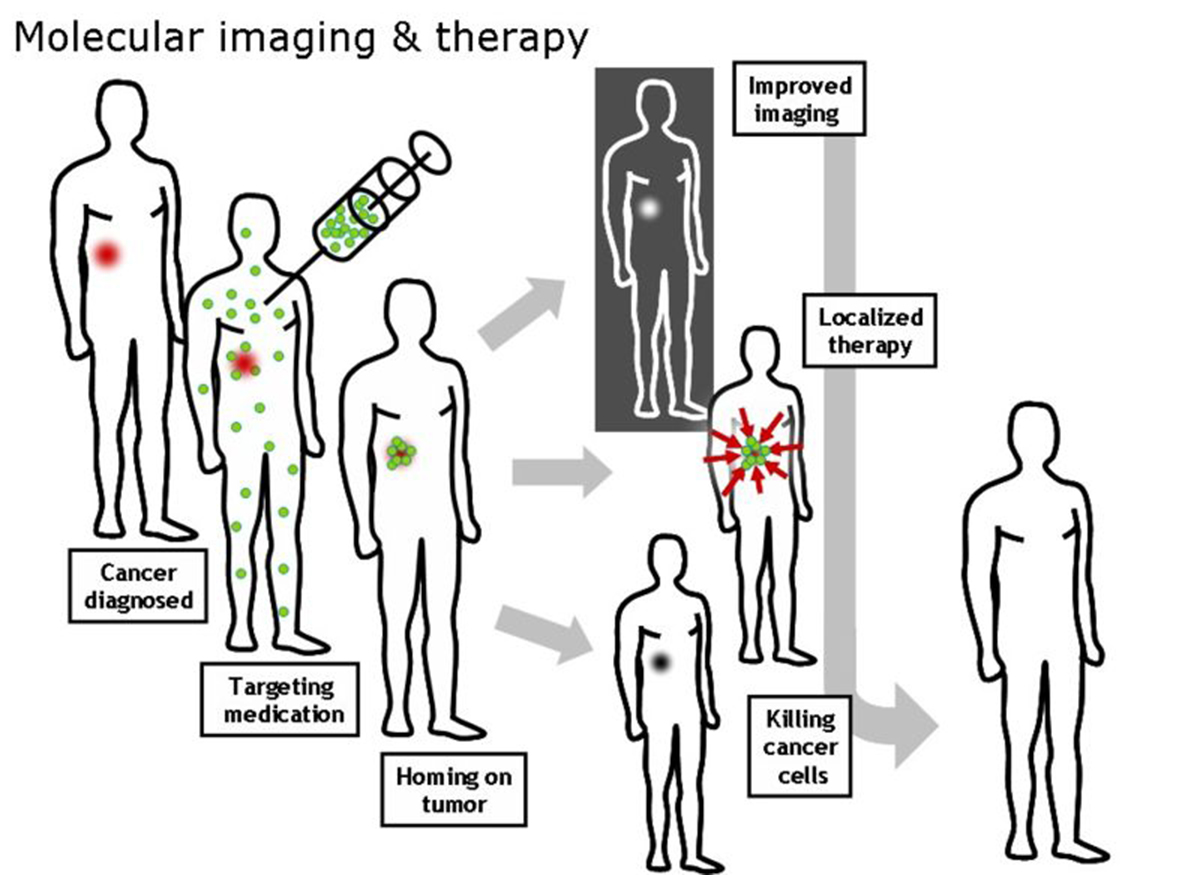Table of Contents
Recently, researchers from the University of California have developed a light-activated drug delivery system to precisely transport the drugs ‘to the point’ while keeping track on their passage. By this approach, it is possible to externally control the release of drugs into the targeted tumor cells and monitor their action on the cells in real-time. This technique of anti-cancer drug delivery will not hurt the healthy cells.

The researchers have designed highly sophisticated nano-constructs with thousands of pores that can hold the anti-cancer drug molecules. The ends of the pores are capped with nano-valves that keep the drug molecules contained until they are activated by light. The nano-particles are made of mesoporous silica and they are fluorescent. Hence they can be monitored by molecular imaging techniques during their passage towards the tumor cells. When the nano-particles are exposed to the high-power two-photon laser light, the nano-valves open up and release the drug molecules. At the same time, at low power the laser light helps to image the cells. The researchers tested these devices on breast cancer cells in culture and obtained positive results. They reported that this technique would help in targeted treatment of breast cancers, colonic cancers and ovarian cancers with nil effects on healthy tissues.
Nano-medicine will help in successful implementation of personalized cancer treatment
Nanotheranostics is yet another lead role that nano-medicine is expected to play in a popularly emerging medical approach called ‘personalized medicine’ or ‘precision medicine’.
In simple terms, personalized medicine emphasizes on individualizing treatment for every patient depending on what best suits him. The critical challenge in personalized cancer treatment is to address the tumor heterogeneity. The characteristics of cells that constitute a primary tumor and its metastatic (circulating) cells differ at molecular level. Similarly, there is considerable molecular diversity between cancers of the same type and even among the cells that constitute an individual tumor. Among other things, this diversity means different sensitivity of different cells and tumors to anticancer drugs. In addition, there is a formidable challenge of the adaptive resistance of cancer cells to these drugs, which also varies between patients.
See Also: Seven Cancer Treatment Practices That May Be Discontinued
Challenges on the way
Though nano-medicine seems to have taken a giant stride in progress, there are quite a few challenges that researchers face in this field. Most of the nano-platforms are still in preclinical or clinical phases of trials. Nano-medicines that have succeeded in laboratory tests need to prove their efficiency in the animal experiments. Researchers have the responsibility to prove that these tiny particles are not toxic to human cells. Extensive research regarding the biological and toxicological properties of the nano-particles is on the way, in order to confidently bring these sophisticated drug delivery platforms from bench to bed side.
Till date, various studies on nano-medicine have showcased a foreseeable progress in the field of cancer management. Undoubtedly, nano-medicine will determine the future of personalized and targeted cancer treatment.
- Wang, L., Chuang, M. & Ho, J. A. (2012) Nanotheranostics – a review of recent publications. Int J Nanomedicine 7, 4679-4695
- Cho, K. et al. (2008) Therapeutic nanoparticles for drug delivery in cancer. Clinical Cancer Research 14(3), 1310
- Croissant, J. et al. (2014) Two-Photon-Triggered Drug Delivery via Fluorescent Nanovalves. Small. Early Online Publication
- Sumer, B. & Gao, J. (2008) Theranostic Nanomedicine for Cancer. Nanomedicine 3(2), 137-140
- Kim, T. H., Lee, S. & Chen, X. (2013) Nanotheranostics for Personalized Medicine. Expert Review of Molecular Diagnostics 13(3), 257-269.
- Photo courtesy of National Cancer Institute News & Public Affairs by Flickr : www.flickr.com/photos/ncimedia/8009859023
- Photo courtesy of KristianMolhave by Wikimedia Commons : en.wikipedia.org/wiki/File:MolecularImagingTherapy.jpg


Your thoughts on this